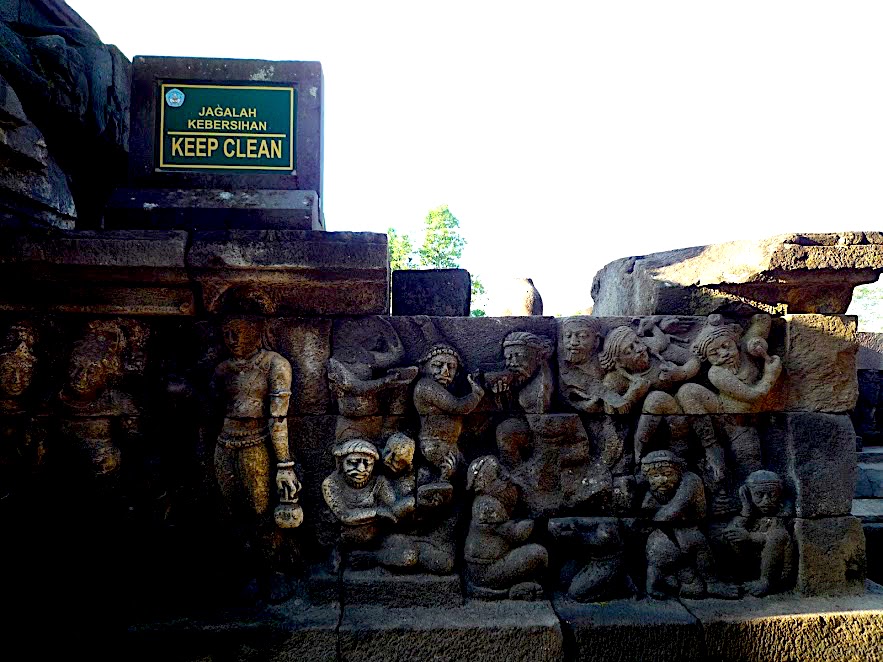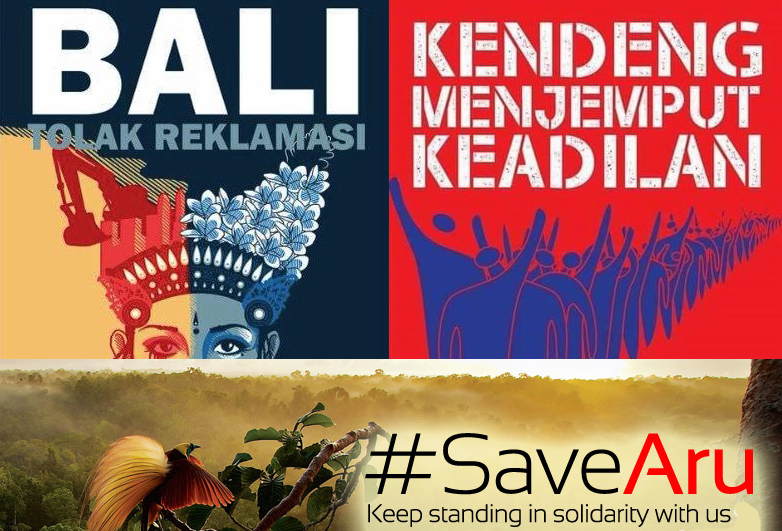Does religion help the environment cause in Indonesia and around the world?
In 2016 at the climate summit in Morocco, governments met to affirm their adoption of the 2015 Paris Climate Agreement. Signed by 111 countries (as of November 2016), the agreement commits to reducing carbon emissions and recognizes the human impact on climate change. At the same climate summit in Marrakech, hundreds of religious leaders and environmental activists launched the Interfaith Climate Statement.
The Interfaith Climate Statement included a call for ‘new ways of living that honor the dynamic relationships between all forms of life to deepen awareness and the spiritual dimension of our lives.’ Nine years earlier, in 2007, the annual climate summit was held in Bali, Indonesia. At that summit ten Indonesian religious leaders from six religious groups in Indonesia met together and produced their own inter-faith statement to share with the world. The Indonesian inter-religious statement included a similar call: ‘these words: ‘[We] commit ourselves in our continuous efforts to inspire and motivate our people at the grassroots level…to protect the earth from global warming as a part of basic religious teaching and local wisdom.’ I think that the two inter-faith statements are connected. Indonesia has been an early adopter in recognizing and addressing climate change, and in showing how religious groups can play an important role.
Indonesia is feeling the effects of climate change earlier than many other countries. Its thousands of islands are vulnerable to rising sea levels and the increase of typhoons and flooding caused by warmer oceans. Indonesia was also one of the first nations to establish a national strategy for addressing climate change, reducing carbon emissions and protecting rainforests.
Another key feature of Indonesia is its religious practice and religious diversity. Indonesia has the largest Muslim population of any nation in the world and it benefits from a long history of recognizing and promoting religious diversity. Since Indonesian independence in 1945, the national ideology of Pancasila includes a belief in religious diversity and a formalized recognition of five religious groups – Muslim, Catholic, Protestant, Hindu and Buddhist (later Confucianism was added to make it six). In many cases, religious leaders are expected to contribute to public discussions and work together on solving common problems at the local and national level. The inter-religious statement in Bali in 2007 was quite a new sight for the world, but it was not unusual for Indonesia.
In the past 15 years, there has been a rapid rise in environmental activism from religious groups. Even though religious groups differ in many of their beliefs and practices, most agree that need to care for our environment. As the inter-religious statements demonstrate, the problems of climate change are not only problems of science and technology. They are moral, ethical and spiritual problems about how we live our lives. By making statements together, religious environmental activists amplify their voices in a hope to change government policy to become more environmentally-friendly.
Global statements, local impact?
Since 2016 the Interfaith Climate Statement has been signed by thousands of religious leaders and activists who represent a growing religious environmental movement. What impact do such grand sentiments on a global level have for local communities suffering from the effects of climate change?
Religious environmental movements aim to change how local people think about the environment and how they live. Since the Indonesian inter-religious climate statement in 2007 to “to inspire and motivate our people at the grassroots level”, religious groups in Indonesia have started many initiatives to help people find creative approaches to become environmentally-friendly. The Indonesian Council of Islamic Scholars (Majelis Ulama Indonesia – MUI) have delivered a series of fatwas (religious edicts) on environmental conservation. There is an increase of eco-friendly “Green Mosques” and “Green Churches”, as well as Hindu and Buddhist initiatives to plant trees and increase recycling.
Indonesia is also home to many local environmental movements, often led by indigenous people. In these environmental movements, local people try to protect land from being exploited. For example, the Save Aru Islands movement kept the islands from being taken over by a multi-national corporation. Local farmers are working to protect their local environment from cement mining in Kendeng, Central Java. And people in Bali are working to protect sacred sites from a land reclamation project in Benoa Bay.
These examples illustrate the challenge of caring for the environment at the local level. Local people may want to adapt better environmental practices, but how much do governments and corporations listen to the needs and the solutions of local communities? Sometimes in trying to create environmental policies, the status and rights of local people are negatively affected. How do local practices of religion affect how people care for the environment? How do global environmental movements interact with local people?

To answer these questions, we need more research about local environmental movements, and especially research to help us understand how religious beliefs and practices interact with environmental movements. We can see this beginning to happen here in our very own Centre, with the CRPL’s recent Research Day titled: Religion and Climate Change Adaptation: Resilience or Resistance? In Indonesia, the Centre for Religion and Cross-Cultural Studies at Gadjah Mada University conducts extensive field research on this subject as part of its research theme on religion, culture and nature.
As the climate changes, people around the world are becoming more aware of their natural environment. Religious environmental activists can play a role in increasing this awareness at the global level, and in local communities affected most severely by climate change. Global reforms to environmental policy and sustainable development will be determined ultimately by the actions of millions of local communities. Activists, leaders and academics will need to listen carefully to local communities and work together with them to respond creatively and effectively to global changes at the local level.
Modified from original post --
By Jonathan Smith
Image Credit(s): Jonathan Smith
